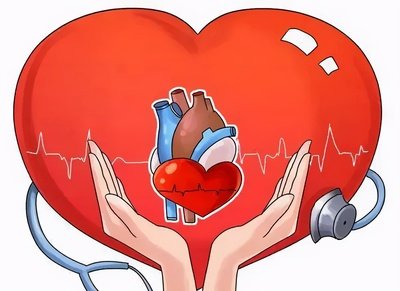Let's talk about congenital heart disease, a "heart secret" that babies are born with. It may sound scary, but the good news is that with advances in medical technology, many little owners of this condition can be treated effectively and live like happy little soap bubbles. Today, we're going to dive into the causes, symptoms, ways to look for congenital heart disease and treatment options to educate you on this medical topic.

Firstly, it's important to understand that congenital heart disease isn't just a heart problem that we fall in love with, it's something that babies are born with. It usually develops during the first eight weeks of pregnancy, when something goes wrong with the structure or blood vessels of the baby's heart, leading to the emergence of this "little secret of the heart". First and foremost is a ventricular septal defect, which is like a small window between the two main chambers of the heart through which blood can flow without being separated.
Next is ventricular septal defects, which are small holes between the two upper chambers of the heart where blood can get mixed and confused. Then comes Tetralogy of Fallot, a group of heart problems that include ventricular septal defects, aortic stenosis, aortic ectasia, and right ventricular hypertrophy. It sounds like a wonderful piece of heart theatre. Then there's aortic stenosis, which means that a part of the aorta has become narrowed, like a motorway blocked by traffic, and blood doesn't flow well.

The causes of congenital heart disease, well, haven't been fully mapped out yet, but there are a few culprits that can be ranked. Firstly, there is the genetic factor. If someone in your family has congenital heart disease, your babies may be in the lottery for heart disease. Also, some specific gene mutations have been linked to heart development problems. Secondly, there are environmental factors. During pregnancy, a mother's exposure to toxins, infections or medications may increase her baby's risk of developing congenital heart disease. So, mums-to-be should take special care not to expose their foetus babies to these invisible dangers. Finally, there are genetic syndromes, such as Down's syndrome, which are associated with congenital heart disease. These syndromes may cause structural abnormalities in the heart, increasing the likelihood of the baby developing the condition.

Firstly, breathlessness can be a symptom, especially when eating or being active. This is because the heart is unable to supply enough oxygen to the body, like an empty fuel tank and a running engine. Secondly, cyanosis may appear, which means that the skin or lips may turn a bluish-purple colour. In addition, your baby may have problems with breastfeeding, have a hard time sucking on a pacifier, and tire easily. This is because heart problems affect their stamina and endurance as if they are tired from having to do push-ups after a full meal. Finally, some babies with congenital heart disease may not grow as fast as they should, as if they were plants planted on unfertile soil and growing slowly.
They will keep an eye out for strange noises, like the kind of gurgling you hear when you're working on your car, that could be something wrong with the heart. There are many ways to treat congenital heart disease, depending on the condition. Firstly, for mild heart problems, doctors usually prescribe medication, which is like a "flavouring" for the heart, to help improve its function and reduce symptoms. There is also a minimally invasive procedure called cardiac catheterisation, which is done through a catheter instead of opening the chest. It's like the doctor is playing with a "miniature flying machine" inside the heart to fix heart problems.
Finally, a heart transplant is a last resort, but it is an extreme option. Although congenital heart disease sounds complicated, with advances in medical technology, many little owners are getting healthier and happier.





